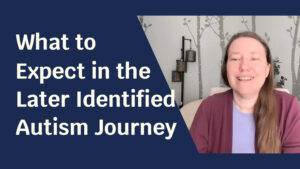The starting places
Getting reasonably comfortable with people is not a one-and-done affair. Getting to where you are now took a long time, and lots of different kinds of experiences, both negative and positive (which makes it all the more confusing and complicated to untangle).
Which means that there are a bunch of different parts of you that are crying out to be heard, to be understood, and to be treated with respect and compassion.
Over several years of coaching autistic adults and teens, and of course my own journey, I’ve noticed patterns of common areas that people need to work through to get to the point of being reasonably comfortable with people.
Your particular needs will vary of course, yet I hope this provides some clues to get you started, whether you’re working through this on your own, with a therapist, or would like my help at any point.
The many paths
I visualize these like the many paths that wind through a deeply wooded forest. Some of the paths intersect others, some go all the way from the beginning to the end, some are short, some are off to the side and you have to fight your way through thorny bushes to find them.
Which of these paths resonate with you?
- Figure out your current social patterns, and where they came from.
- Identify your current beliefs around social expectations, norms, yourself, and others. Find the ones that are holding you back.
- Dissolve the negative self-talk that says, “I’m not ____ enough.”
- Explore how your sensory system may have influenced your time with people.
- Enhance your internal awareness, so you can tell when you’re getting overwhelmed before it gets to meltdown or shutdown levels.
- Develop emotional awareness and skills so feelings become less overwhelming, scary, or you have more access to them.
- Learn new ways to communicate your needs, intentions, and boundaries in ways that work for your directness and that get through to non-autistics. For example, how to get around the eye contact thing.
- Explore what your boundaries are, or need to be, for the social or work life you want to have.
- Start to engage in small, safe ways. Repattern old fears with new, positive experiences.
- Learn to move acquaintances or casual friends to closer, more meaningful friendships.
What others would you add?
To get through the forest, you have to do the internal work of exploring yourself. But you don’t have to do it alone.




